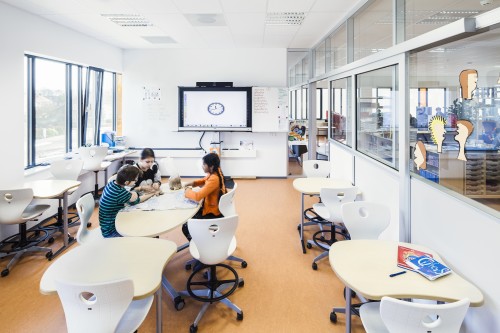
A 10 step guide by Adrian James, BB93 committee member
 The new BB93 Acoustic design of schools, sets out performance standards for schools in England and Wales. In this guest contribution post, Adrian James, a BB93 committee member, addresses the question many asked at the recent Acoustics and Noise Consultants conference in Birmingham, and which has caused much head scratching amongst main contractors: How do you achieve the new Special Educational Needs (SEN) classroom standard? The answer is a ten step guidance to the acoustic design of an SEN classroom which Adrian presented last month during a school acoustics seminar at Queen’s University, Belfast.
The new BB93 Acoustic design of schools, sets out performance standards for schools in England and Wales. In this guest contribution post, Adrian James, a BB93 committee member, addresses the question many asked at the recent Acoustics and Noise Consultants conference in Birmingham, and which has caused much head scratching amongst main contractors: How do you achieve the new Special Educational Needs (SEN) classroom standard? The answer is a ten step guidance to the acoustic design of an SEN classroom which Adrian presented last month during a school acoustics seminar at Queen’s University, Belfast.
This subject is of a much broader significance than the UK alone as inclusion is an increasing global topic. Creating suitable environments for SEN pupils needs more attention and from an acoustic perspective there are many sensitive listeners; profound hearing impaired, temporarily hearing impaired, non-native speakers, ADHD and autistic students all need a good sound environment.
Ten steps to the acoustic design of an SEN classroom:
1. Keep the room size down. Reverberation naturally increases with room volume, so large rooms need more acoustic treatment. Children with special needs should generally be taught in smaller classes anyway.
2. For the same reason, keep the ceiling height down. Things get difficult at more than about 2.4 m.
3. Use only “Class A” absorptive finishes – these are the most efficient and so reduce the areas required. However, the SEN standard also controls low-frequency (bass) reverberation time, so you will also need some bass absorption.
4. If possible, use dry-lined walls as these provide some useful bass absorption at no extra cost. The new standard also lets us include the effects of furniture and fittings.
5. A conventional “Class A” suspended ceiling tile is most efficient and provides some bass absorption, especially if you use proprietary “Bass pads” on top of the tiles.
6. If for some reason you can’t have a suspended ceiling, consider suspended horizontal baffles or “rafts.” These are very efficient because both sides are absorptive, but they are not great at low frequencies, so you will need a lot of bass absorption from wall panels.
7. It follows that achieving the SEN standard in Thermally Activated Building Systems (TABS) classrooms is difficult and expensive – but not impossible.
8. Whatever the ceiling type, you will almost certainly need some acoustically absorbent wall panels as well. At least some of these should be at ear height, so they should be robust.
9. Conventional “Sabine” calculations are unreliable for this type of room. To get the design right you really need a 3-D acoustic computer model.
10. It follows that you need acoustics consultants who are experienced in this type of design. Get them involved early to advise on room shapes and sizes, and make sure that they commission the completed rooms, so that we can all learn how effective different designs are in practice.
Inclusion is an increasing global topic. Creating suitable environments for SEN pupils needs more attention and from an acoustic perspective there are many sensitive listeners; profound hearing impaired, temporarily hearing impaired, non-native speakers, ADHD and autistic students all need a good sound environment.
Adrian James has produced an auralisation tool so it is possible to listen to the different minimum acoustic standards. Hear the difference for yourself in this auralisation video.
Or download a copy of BB93 and Essex Study Report which Adrian was a co author.
Adrian James is a Director with Adrian James Acoustics Ltd in the UK. He spoke about implementing BB93 Acoustic Design of Schools at the recent EIAS 2015 – watch the presentation here.


